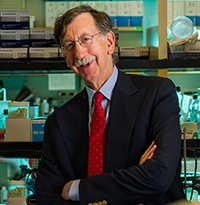Today, three quarters or more of all childhood cancer patients will be cured of their disease, a higher percentage than ever before. And the numbers will only get better as we learn more about the biology of childhood cancers and develop new ways of treating them.
Even with rising cure rates, many childhood cancers remain a challenge for young patients and their families. Some of the reasons I’m optimistic about the outlook for pediatric cancer patients are:

1. The latest data show there is a 90 percent survival rate for patients with the most common childhood cancer, acute lymphoblastic leukemia (ALL).
2. We’re not only curing more patients but we’re doing so with fewer side effects, including the “late” effects that can emerge years after treatment. In ALL and Hodgkin lymphoma, for example, lower doses of radiation therapy can often be just as effective against the disease but produce far fewer side effects.
3. Advanced technology enables us to see minute amounts of residual leukemia that previously were undetectable. This has enabled us to change our treatment approach. A clinical trial showed the new approach can improve survival rates for such patients from about 30 percent to 75-80 percent.
4. In parallel with the treatment of adult cancers, our ability to genomically profile childhood tumors – to identify the specific gene mutations that drive their growth – is improving. This is leading to the day when we can offer patients a menu of therapies that target those mutations.
5. A variety of advances have improved the quality of life for young patients receiving chemotherapy. More than 90 percent of pediatric cancer therapy can be done in an outpatient setting, so children don’t have to be admitted to the hospital. There have been vast improvements in controlling the nausea and vomiting associated with chemotherapy and in controlling the pain that sometimes results from cancer or cancer treatment.
One of the most encouraging aspects of advances in pediatric cancer treatment is that we’ve been able to extend some of them to the next-oldest set of cancer patients: the 18- to 50-year-old age group. By applying the childhood ALL treatment regimen to ALL patients in this age group, for example, we have doubled survival rates over the past 10 years.
Stephen Sallan, MD, is a senior pediatric oncologist at Dana-Farber/Boston Children’s Cancer and Blood Disorders Center and chief of staff emeritus at Dana-Farber Cancer Institute.
